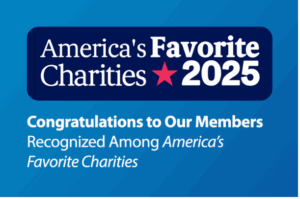Sarah Ford | October 10, 2013
Innovation Often Starts With the Words ‘What If?’
With government beset by perennial budget battles that make sufficient public funding for new social programs less likely, innovation to increase the reach and effectiveness of existing programs—whether public or private—becomes more essential than ever.
But “innovation” is often associated with technological innovation or sophisticated research and development beyond the reach of most of us mere mortals. So it’s worth decoding what innovation is really all about. In the dictionary, synonyms for innovation include “revolution” and “transformation.” But there is also the more modest “alteration.”
In the social sector, we’ve seen dramatic results from innovations representing modest alterations to existing programs. An example is school breakfast, which has a big impact on the course of a young student’s day.
From its creation in 1966 until recently, breakfast was served one way: in the school cafeteria, as you’d expect. This proved less than ideal as it is difficult for students to get to school early and there may be stigma attached to being the “poor” kids who come for free breakfast. An innovation that cost little but made a big difference to many was moving breakfast from the cafeteria to the first 10 minutes of first period; or alternatives such as “grab and go” carts from which children could grab a meal on the way in to school or between classes.
The result: increased participation, from an average of about 40 percent of eligible students, to nearly 100 percent in many schools. It required little or no spending, simply thinking different.
Another innovative idea being developed by the Aspen Institute’s Franklin Project promises to expand national-service opportunities by creating a national certification system. Instead of limiting service opportunities to AmeriCorps agencies, any certified social-purpose organization could create service opportunities to help meet the demand, which currently outstrips supply by a factor of five.
Few social-service organizations have the luxury of a budget for innovation, and many may be intimidated by a process that sounds complicated, time-consuming, and expensive. An entire consulting industry exists to market and sell innovation processes.
But innovation doesn’t always require research, testing, design expertise, consultants, and so forth.
Source: The Chronicle of Philanthropy
Get Resources and Insights Straight To Your Inbox
Explore More Articles
Congratulations to Our Members Recognized Among America’s Favorite Charities
Each year, The Chronicle of Philanthropy releases its list of America’s Favorite Charities—the 100 nonprofits that raise the most from individual donors, foundations, and corporate…
Read ArticleThe Future of Corporate Giving: How Nonprofits Can Prepare
Corporate giving is a valuable part of the nonprofit funding ecosystem. Companies large and small have incorporated philanthropic efforts into their overall business plans, from…
Read ArticleJoin Us at the Workplace Fundraising & Volunteering Summit!
We’re excited to announce that America’s Charities President, Jim Starr, and Board Member, Fernando Lorence of JP Morgan Chase, will be speaking at the Workplace…
Read ArticleGet Resources and Insights Straight To Your Inbox
Receive our monthly/bi-monthly newsletter filled with information about causes, nonprofit impact, and topics important for corporate social responsibility and employee engagement professionals, including disaster response, workplace giving, matching gifts, employee assistance funds, volunteering, scholarship award program management, grantmaking, and other philanthropic initiatives.




